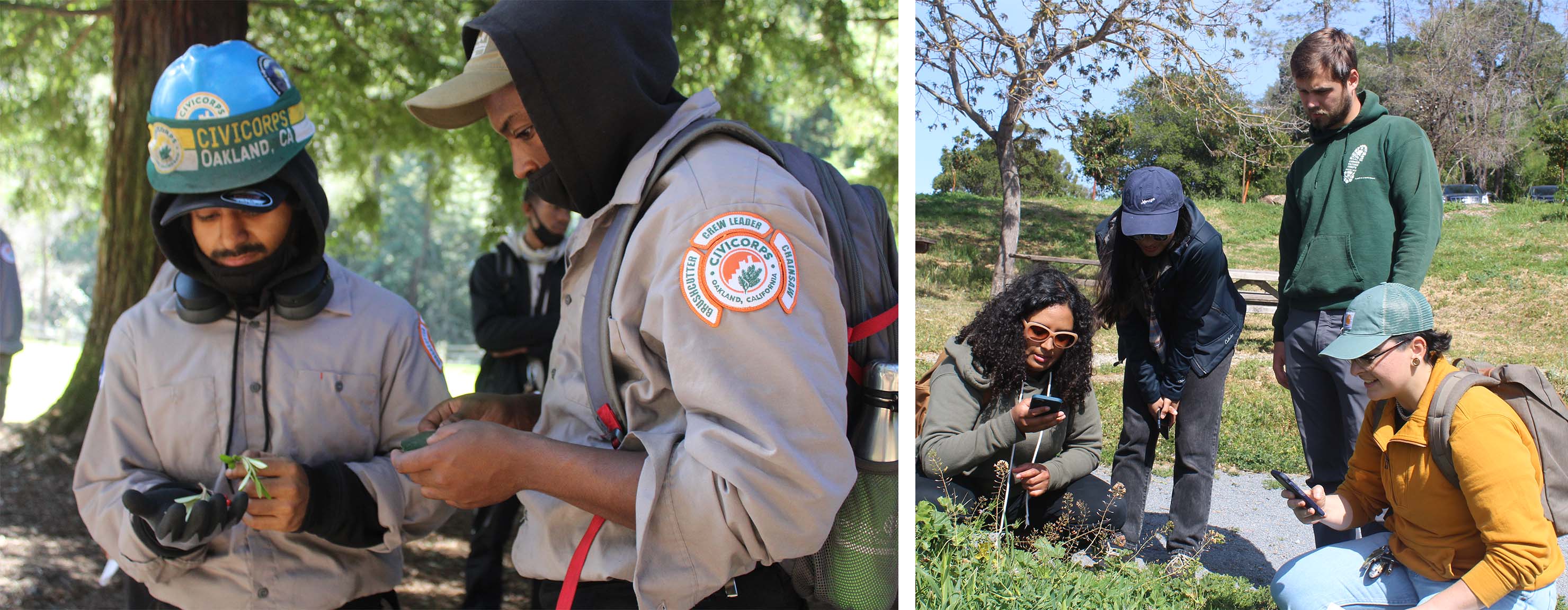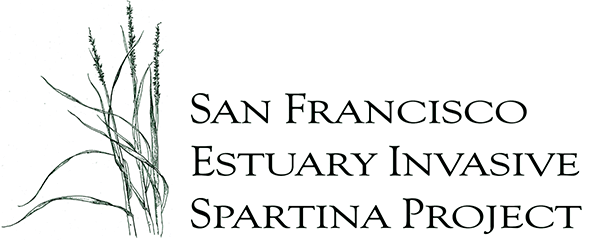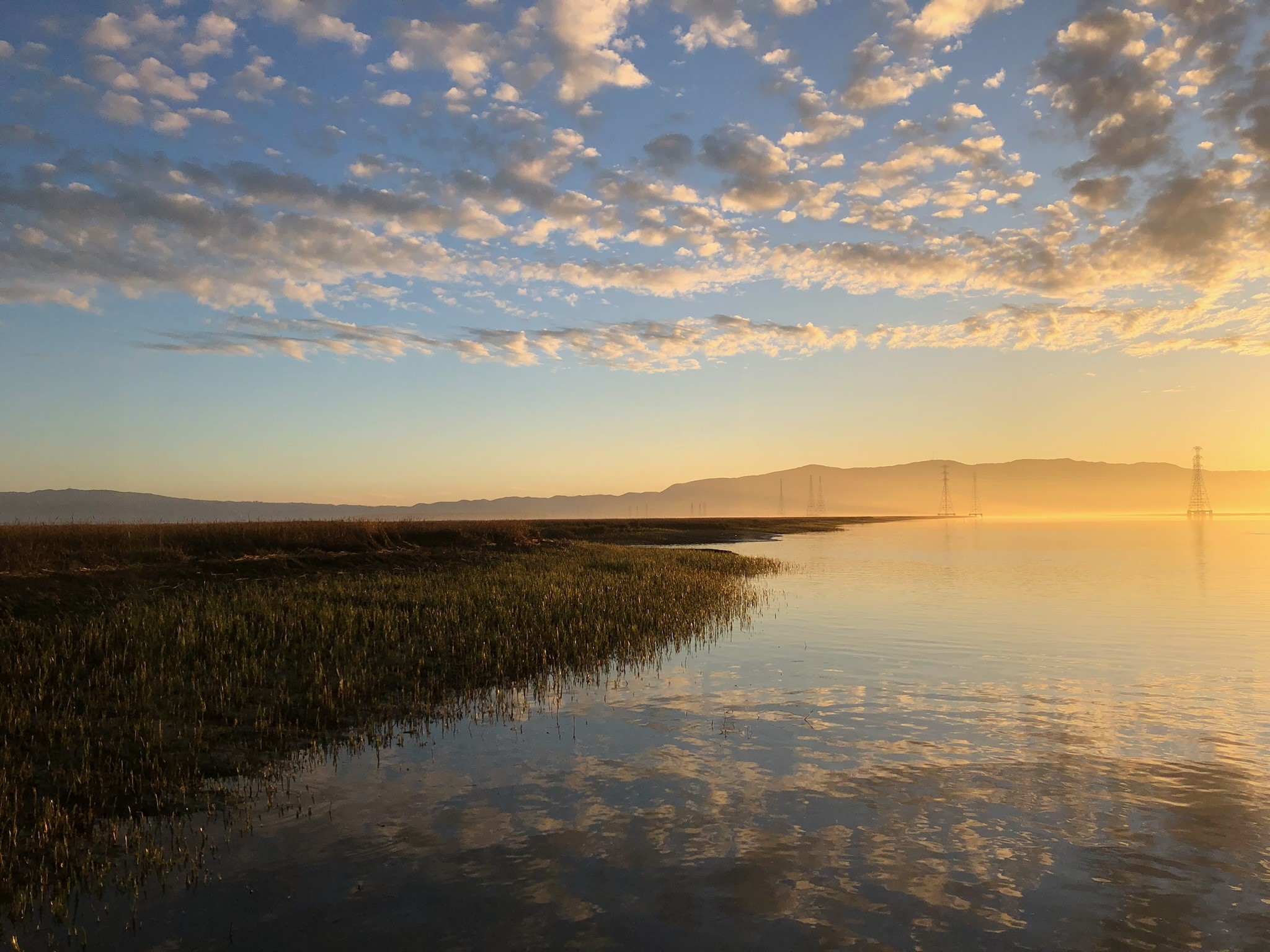
The SF Estuary Invasive Spartina Project (ISP) continues to make strong progress on the eradication of invasive Spartina (cordgrass), protecting native tidal marshes and mudflats across the 70,000-acre project area in San Francisco Bay. This work is accomplished by a collaboration of organizations around the bay, including the California Invasive Plant Council (Cal-IPC), Olofson Environmental, Inc., the East Bay Regional Park District, the State Coastal Conservancy, US Fish and Wildlife Service, and more than 150 on-the-ground partners and landowners. Thank you to all the project partners!
Here are a few key highlights for December 2021 – April 2022.
Treatment and Monitoring:
There are four species of invasive Spartina in the Estuary that the ISP partners are working to eradicate. Our team completed the 2021 Spartina treatment season with an extended winter round of inventory and manual removal of one of the less widespread cordgrass species, Spartina densiflora and its hybrids. Only 21 new plants were detected and treated, bringing the bay-wide total for S. densiflora down to 0.5 m2 net cover (or 0.000123553 acres). This species once had a bay-wide net cover of 4.2 acres and is now nearing eradication from the Estuary!
Of course, one of the many reasons we are protecting these tidal marshes is to provide habitat for sensitive species, including the endangered California Ridgway’s rail. ISP biologists just finished this year’s rail surveys, which means we have been seeing lots of sunrises and sunsets! Why? Because that’s when the birds call the most, and hearing their calls is how we count them. In order to get the best estimate of the bird population, we broadcast recorded vocalizations in the marsh (with special permits from the USFWS), and any rails present will hopefully respond. Following the standardized North American protocol, biologists conducted each survey for two hours total – an hour before and an hour after either sunrise or sunset. In addition to hearing bird calls, this year we were thrilled with Point Blue Conservation Science researchers getting a rare photo of a rail (albeit blurry) swimming near one of the high-tide refuge islands constructed by the project at the Corte Madera Ecological Reserve. We are working on the 2022 Ridgway’s rail report, but you can check out the 2021 season survey report online.
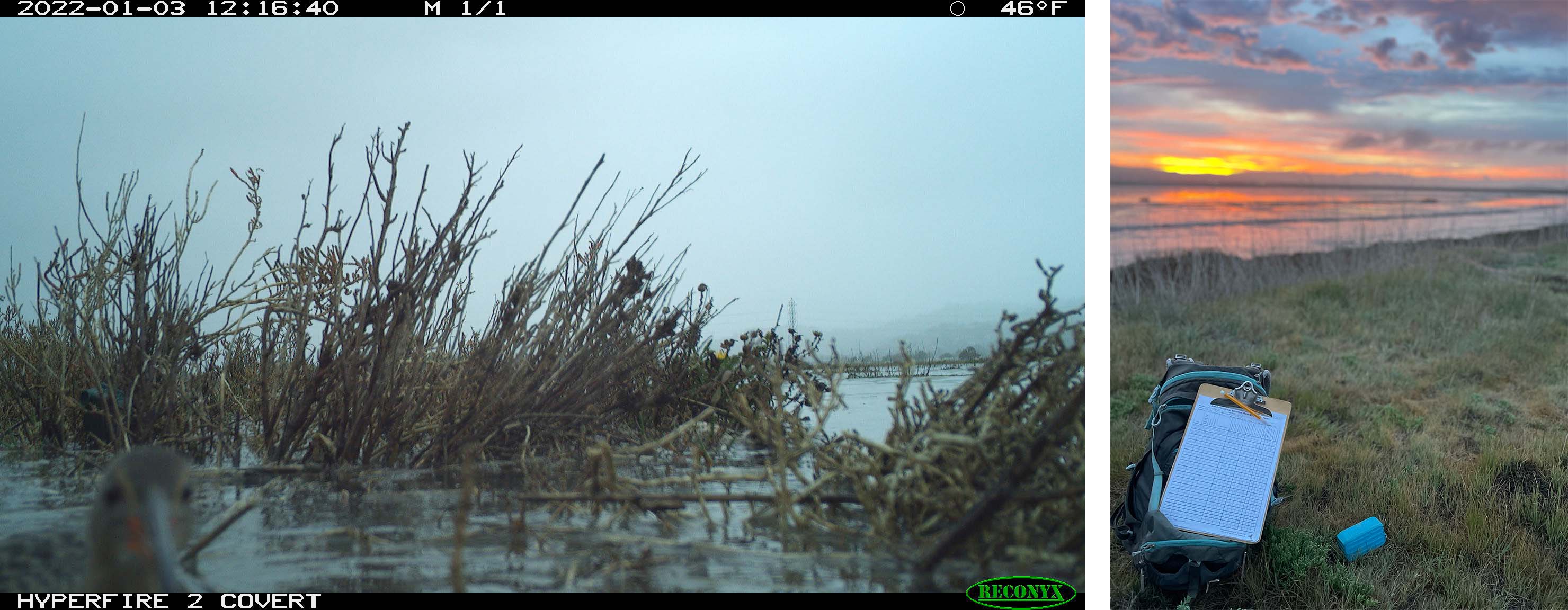
Restoration Program:
A crucial part of this project is replanting native plants to enhance wildlife habitat after invasive Spartina is effectively removed. Our restoration crews continued their efforts to plant native Pacific cordgrass and marsh gumplant at tidal marshes where hybrid Spartina has been treated. We also increased our focus this year on native plantings in marsh-upland transition zones, areas typically along a marsh edge that link tidal marshes with habitats that are above the tides. These zones provide habitat cover for wildlife from predators during high tides, especially king tides, when most vegetation at tidal marsh elevations is under water. Historically common, natural transition zones vegetated with native plants are now rare.
Our biologists selected several restoration marshes in the East Bay to begin enhancing the marsh-upland transition zones with native plant species. We planted eight native perennial species to create a diverse assemblage of native plants that provide habitat cover at different heights and densities. At the end of January, we completed our 11th year of habitat enhancements, with over 21,000 native plants installed at 12 restoration sites and 10 high-tide refuge islands constructed at two sites.
As the name implies, high-tide refuge islands are designed to provide habitat during high tides, especially king tides. These small islands are constructed in tidal marshes that lack higher elevation “refugia” for wildlife, including Ridgway’s rails. Designed by partners H.T. Harvey & Associates and constructed by Hanford ARC, the islands are about 2.8 m2 in size and 0.3-0.9 meters above marsh plain elevation, and are planted with natives.
A new pilot project by ISP partner Point Blue Conservation Science is evaluating the benefit of habitat enhancements that provide refuge during high tides. The study uses cameras to look at potential interactions with predators during high tide events, in order to provide guidance on how to enhance tidal marshes to increase rail population resilience to sea level rise. We shared a photo from this study above, with a Ridgway’s rail swimming into view.
Since 2011, our restoration program ― with the help of The Watershed Nursery and many partners ― has now grown and installed a total of more than 550,000 plants at 40+ restoration sites and 82 high-tide refuge islands at 16 sites.
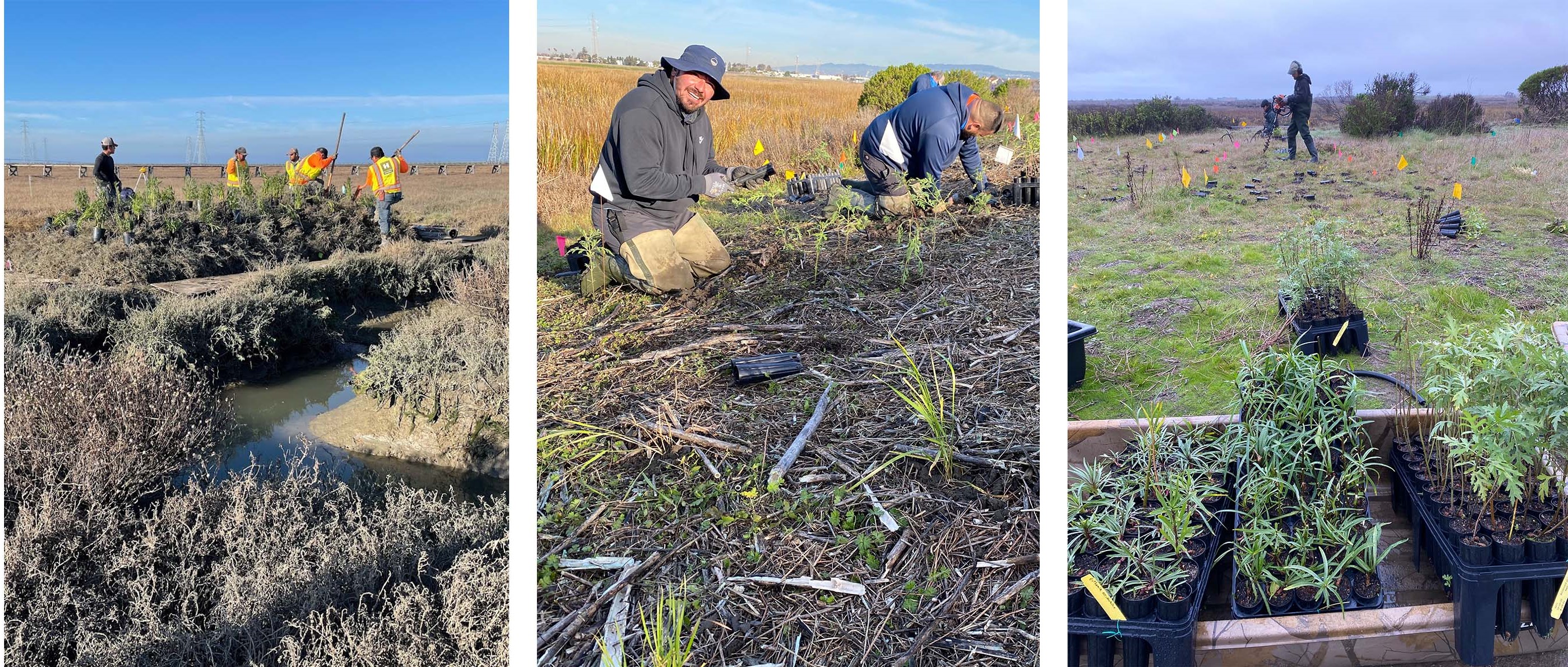
Outreach:
Our outreach team has been making presentations to share updates on the Invasive Spartina Project with local environmental organizations.
- On December 9, Tobias Rohmer (Olofson Environmental, Inc; ISP Monitoring Program Manager) and Lindsay Faye Domecus (Olofson Environmental, Inc; ISP Environmental Biologist) presented a webinar to the California Native Plant Society, SF Yerba Buena Chapter. View the recording on YouTube.
- On December 10, Jen McBroom (Olofson Environmental, Inc.; ISP Ridgway’s Rail Program Manager) joined Lindsay for a presentation to the Sierra Club, San Francisco. View the recording on YouTube.
- On December 16, Drew Kerr (ISP Treament Program Manager) spoke at a meeting of the San Francisco Integrated Pest Management Technical Advisory Committee, as part of a session on projects to restore San Francisco’s tidal marshes. View the recording on YouTube.
Outreach staff members are also training local Conservation Corps members on the basics of habitat stewardship and invasive plant management. This spring, we led full-day training sessions with the San Jose Conservation Corps and with the North Bay Conservation Corps. We also led three half-day intensives on plant ID and two hands-on field days with Oakland’s Civicorps. We have several more training series planned for spring and fall.
Thanks to the following organizations for contributing their time, classroom or nursery space, and staff instructors to train the next generation of land stewards: East Bay Regional Parks District, Midpeninsula Regional Open Space District, California State Parks, Golden Gate National Parks Conservancy, Marin County Parks, Grassroots Ecology, Ecological Concerns, Inc., Marin Audubon Society, and Novato Bayland Stewards.
Please don’t hesitate to contact us at info@spartina.org with any Spartina sightings or site questions.
